Phlox is a genus of approximately 67 species of flowering perennials or annuals. Found mostly across North America (with one species in Siberia), phlox flowers are known for their ability to grow and adapt to various habitats, such as woodland and alpine tundras.
The species within the genus are also known for their colorful appearance, pleasant fragrance, and ability to cultivate the flowers in gardens all over the world.
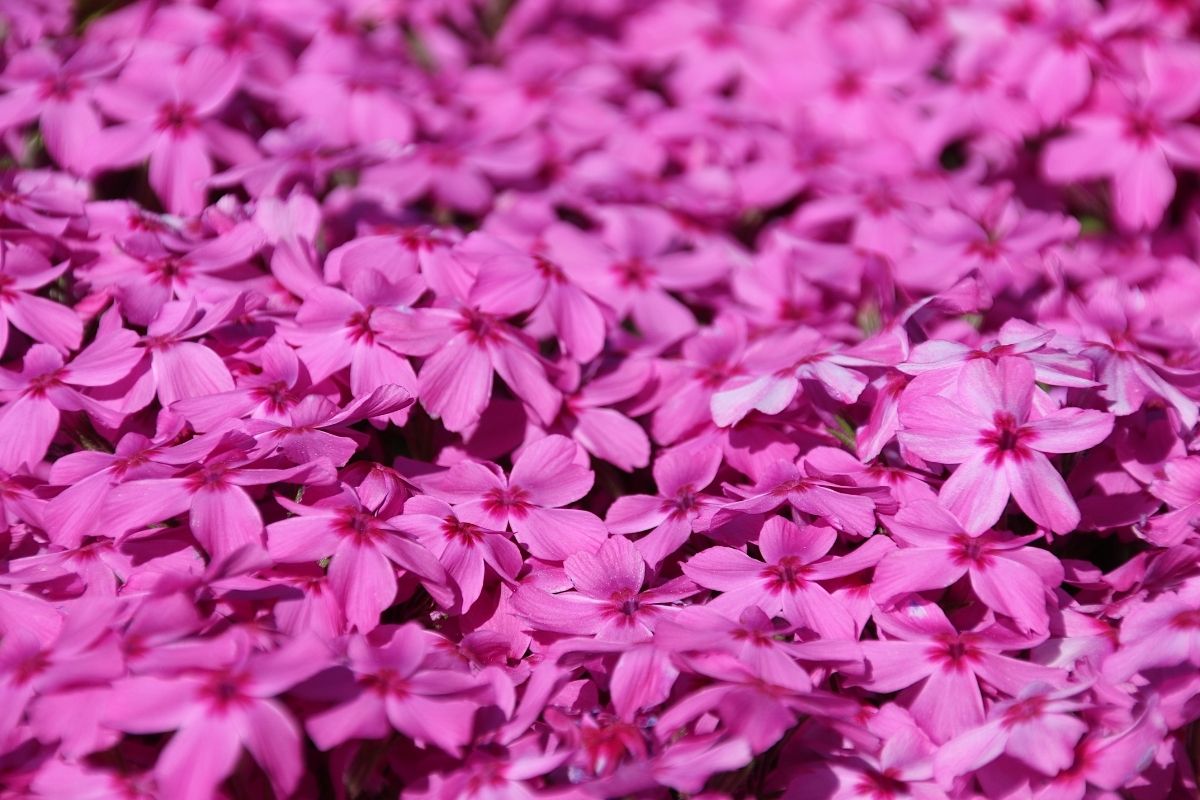
Garden phlox happens to be the most popular phlox species among gardeners for its low-maintenance care requirements, but there are countless phlox species that can be grown in a garden.
Whether you’re looking to add a phlox flower to your garden collection or if you’re simply fascinated by the genus, here is a guide to 17 phlox flowers!
1. Garden Phlox (Phlox Paniculata ‘Bright Eyes’)
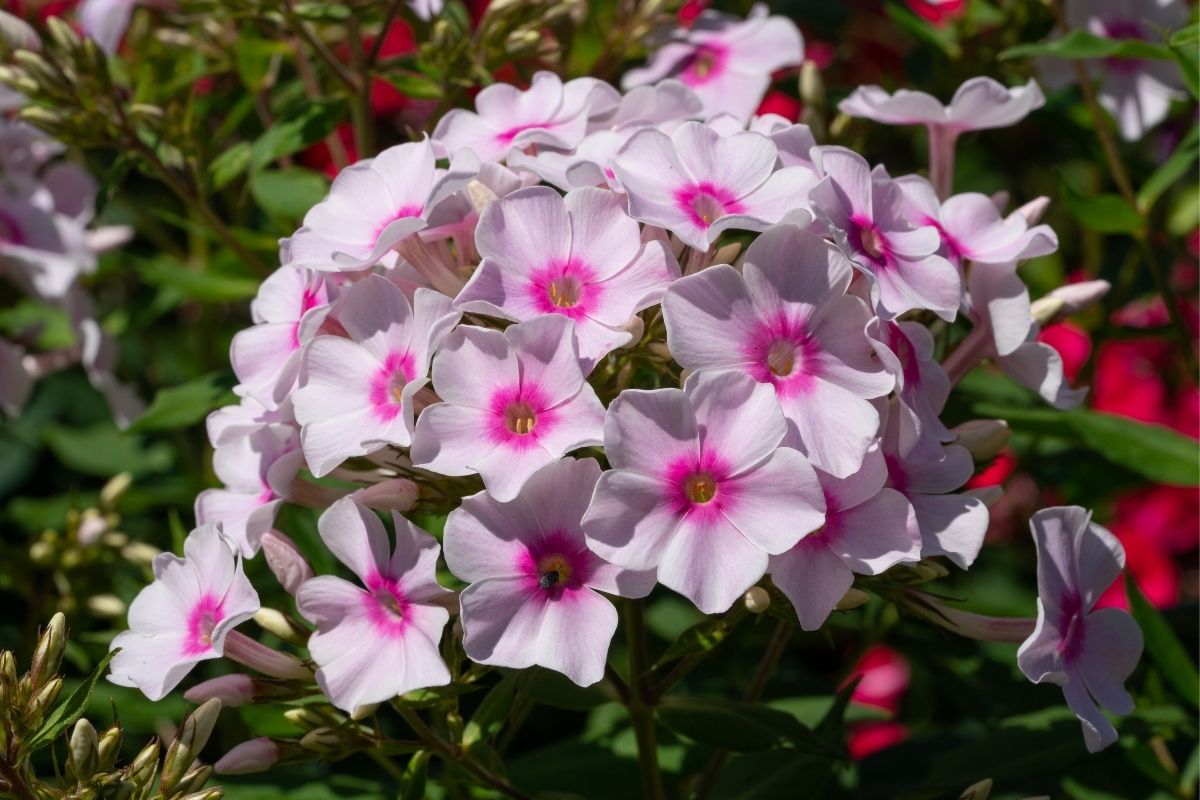
Arguably the most common and popular species of phlox, the garden phlox (also known as the bright eyes phlox) features beautiful soft pink blooms with a slightly more prominent center.
Not only are they a stunning feature to a flower bed, but the garden phlox is notoriously resilient to mildew and provides an excellent source of nectar for hummingbirds, birds, and butterflies.
2. Grace Phlox (Phlox Paniculata ‘Grace’)
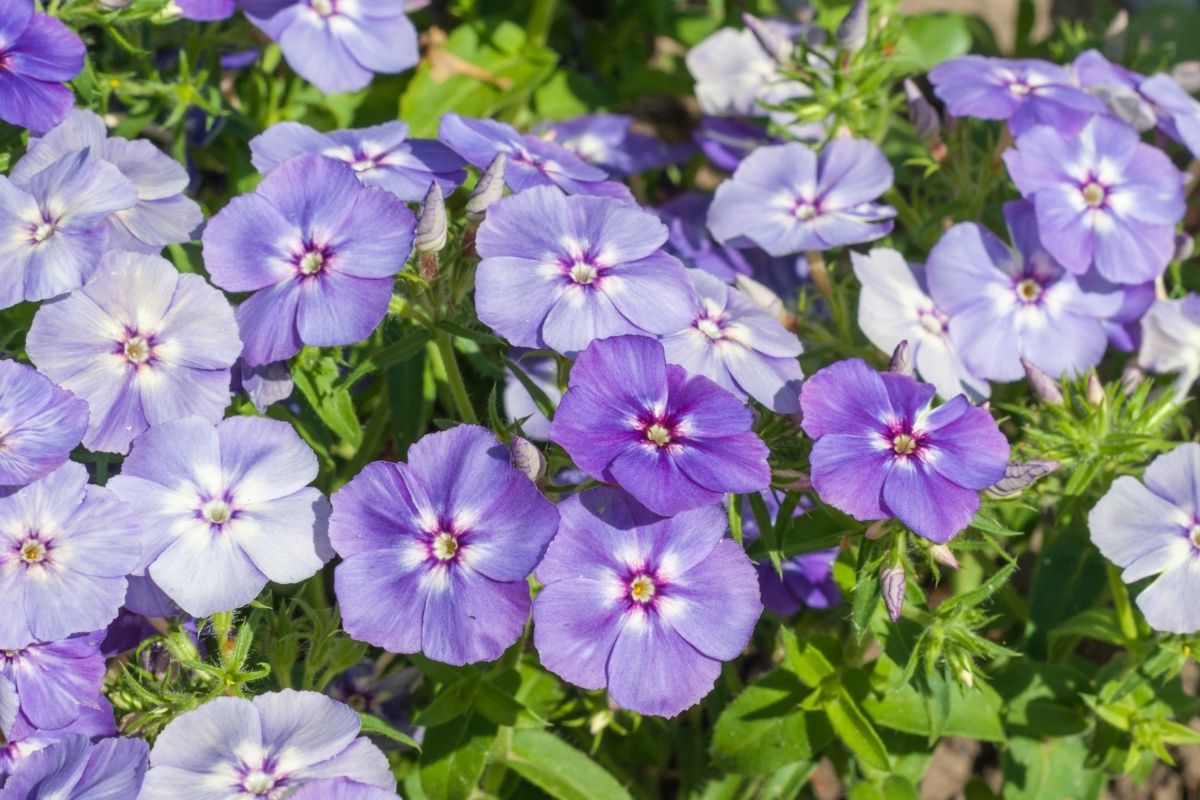
Also known as the pixie miracle Grace, the Grace phlox is known for being one of the most subtle phlox species.
This compact herbaceous perennial consists of lance-shaped green leaves, holding loose clusters of fragrant pale pink or lavender flowers.
The color is understated and muted compared to other phlox species, making it ideal for complimenting the vibrancy of other colors.
RELATED: Fairly Fabulous: Types (inc. Alternative Types) Of Phlox Flowers
3. David phlox (Phlox Paniculata ‘David’)
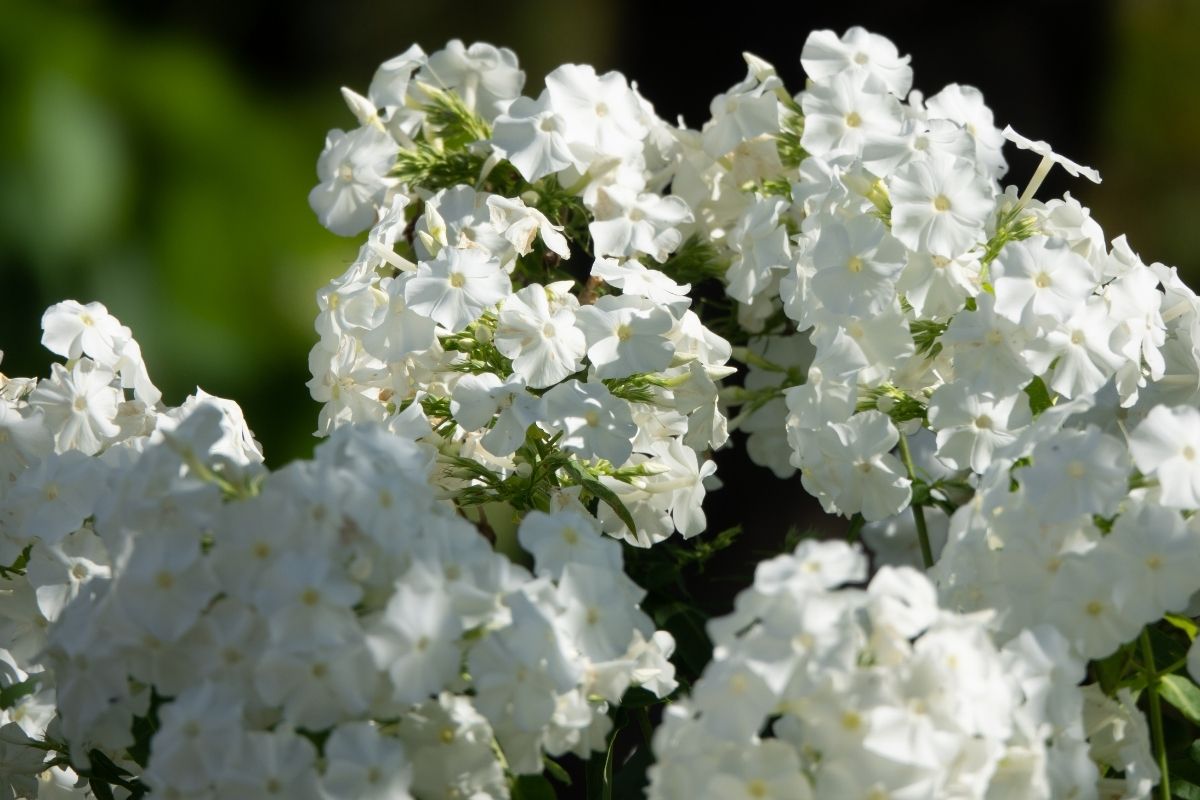
For those looking for a colorless flower, the David phlox offers an elegant bloom of delicate pure white flowers, making it ideal for enhancing the colors of surrounding flowers.
David phloxes are known for their resilience to mildew, so if you plan on growing these flowers in the south, they will require partial shade.
4. Violetta Gloriosa Phlox (Phlox Paniculata ‘Violetta Gloriosa’)
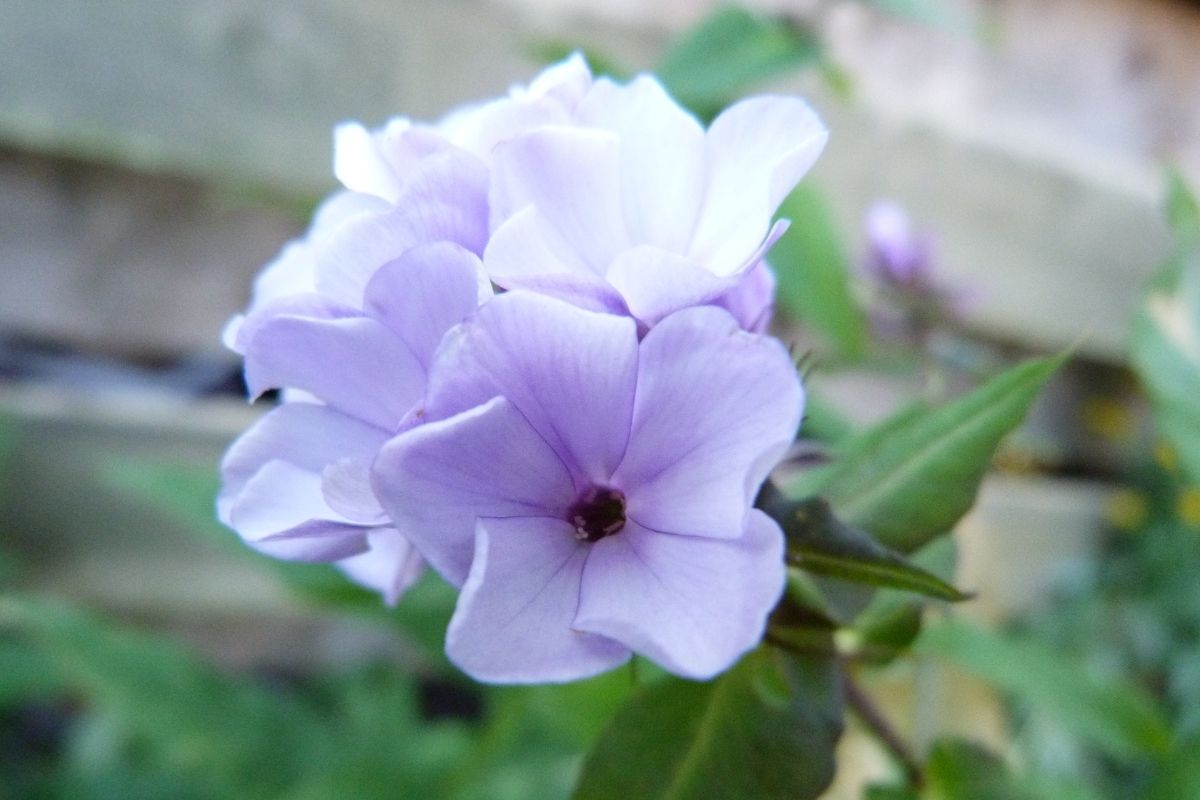
If you’re looking for a soft addition to a flower bed or garden, check out Violetta gloriosa phlox.
This simple flower offers pastel purple or lilac blooms that work beautifully as a complimentary or companion flower among other purple species. The light lavender color also pairs well with pale yellow flowers.
5. Woodland Phlox (Phlox Divaricata)
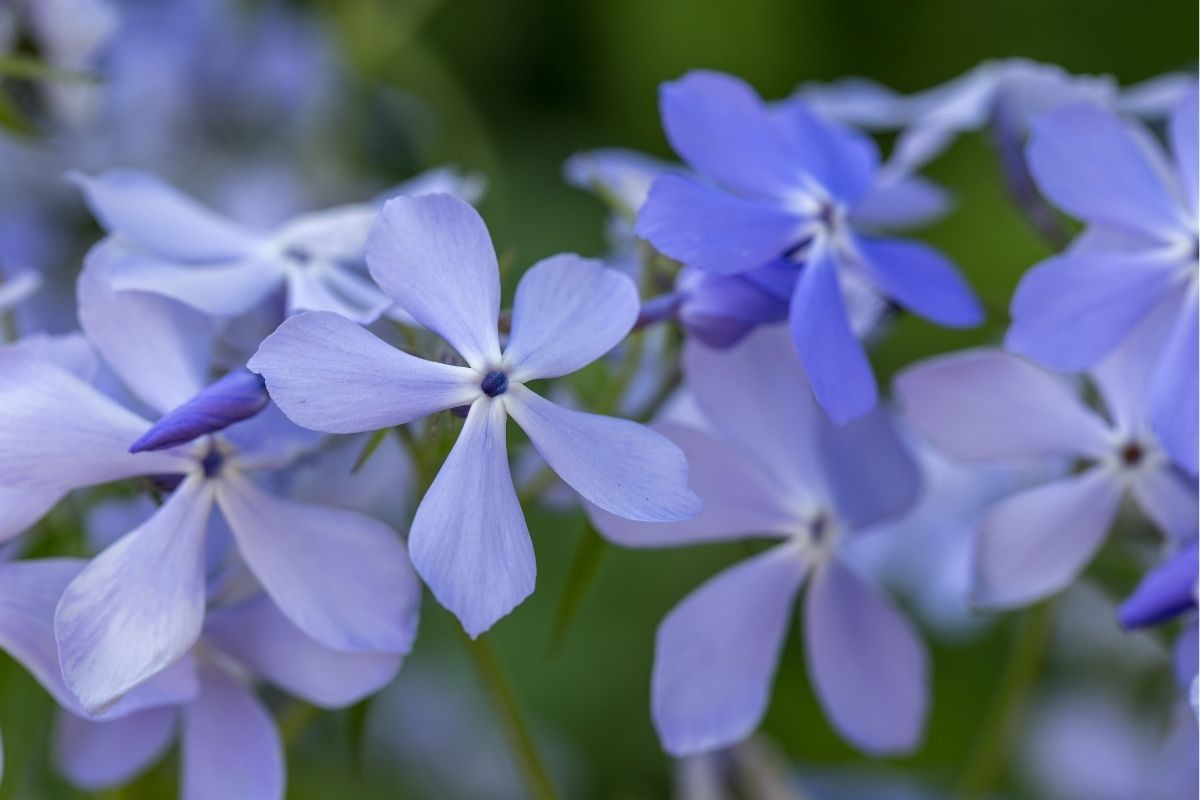
Native to eastern North America, the woodland phlox is a dainty and sweet one-foot tall flower that works best when planted at the front of a flower bed.
Also known as the wild sweet William, the woodland phlox offers small blue petals that range in color from blue to pale lavender. It’s also common to see this species in a white or pale pink variety.
6. Candy Stripe Phlox (Phlox Subulata ‘Candy Stripe’)

Also known as a creeping phlox, the candy stripe phlox is notoriously known for its distinctive candy-like striped pattern.
The bright pink and white stripes make the flowers look somewhat unrealistic, making for a fascinating standout feature in a flower bed.
Candy stripe phloxes are resilient little flowers that thrive in well-drained soils, which is why they are so commonly planted amongst a rock garden. Plus, they help to provide a splash of color!
7. Red Magic Phlox (Phlox Paniculata ‘Red Magic’)
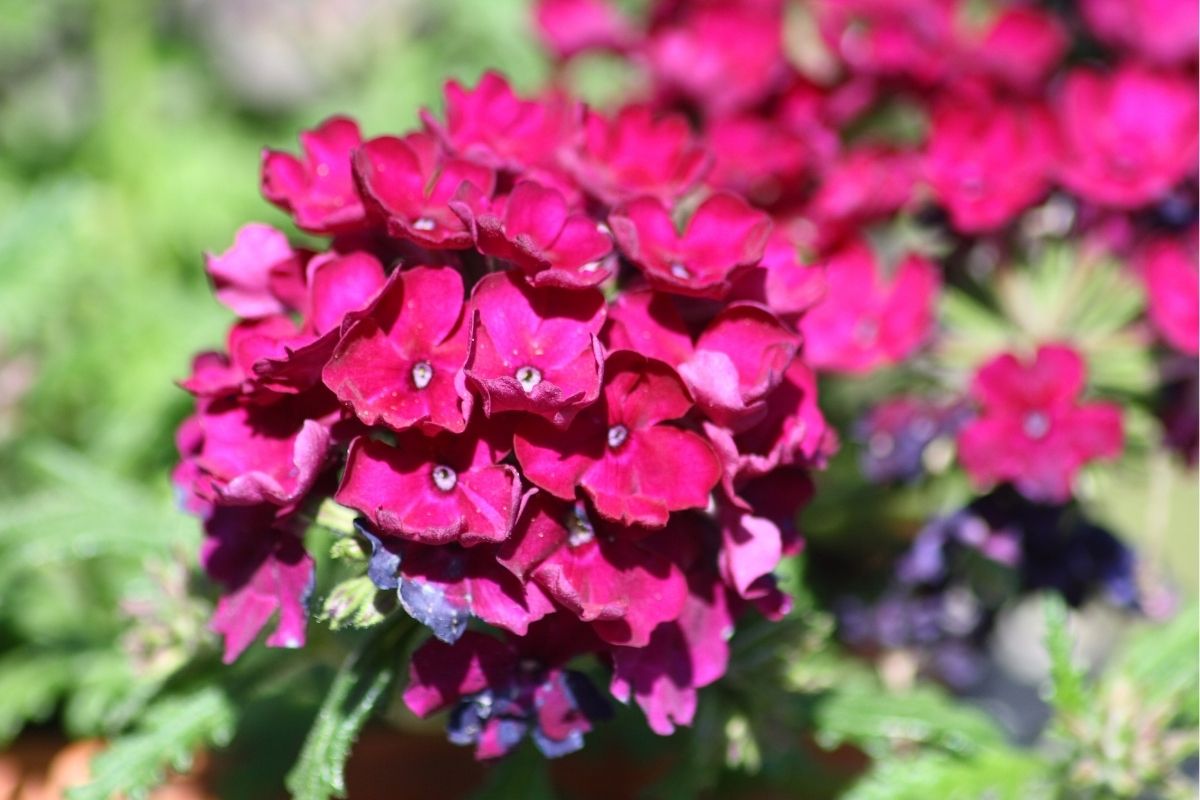
Despite its misleading name, the red magic phlox isn’t actually a red flower.
Instead, this flower features dark pink or fuschia blooms that appear almost red, but they’re more pinkish-purple than anything else.
Red magic phloxes are incredibly vibrant flowers that make for a fabulous standout flower in any garden. Plus, their vivid coloring attracts an array of wildlife for pollination.
8. Little Boy Phlox (Phlox Paniculata ‘Little Boy’)
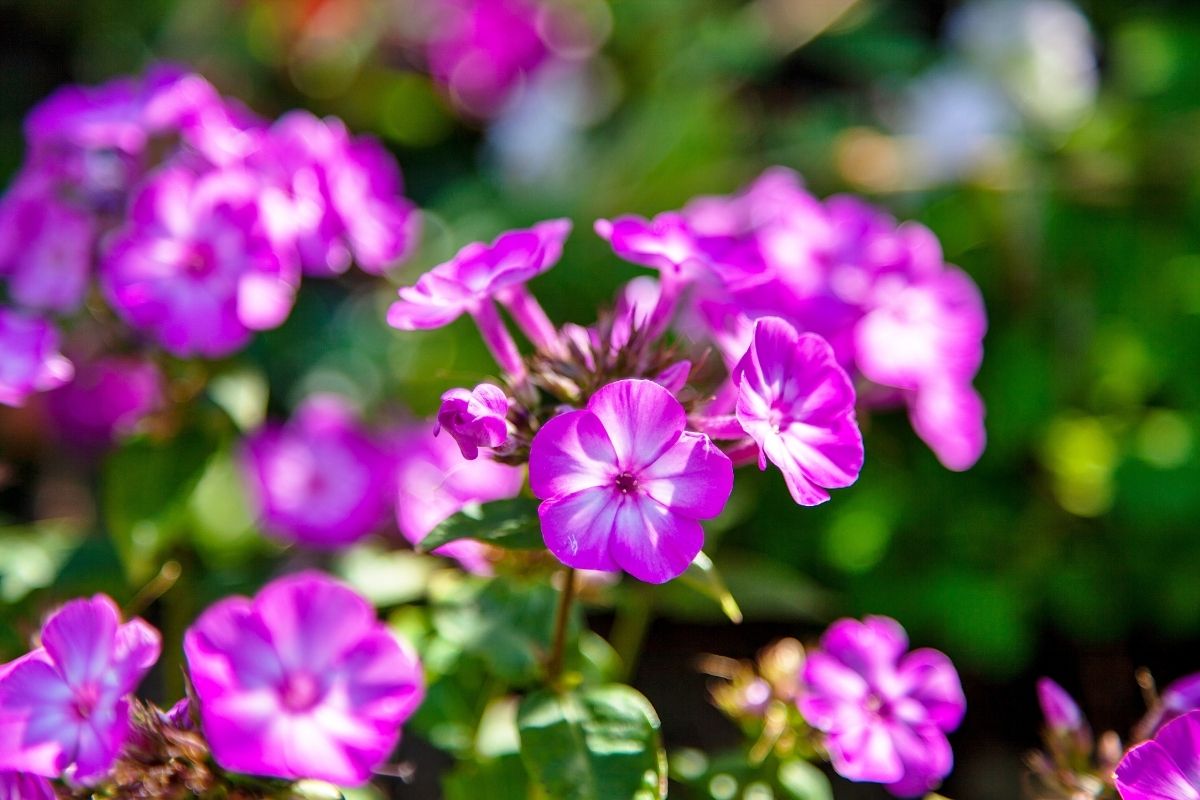
As the name suggests, the little boy phlox is one of the shortest phlox species with an average height of between 1-1.5 feet tall.
These adorable phloxes consist of bright green lance-shaped leaves and beautiful purple flowers featuring a lilac or white center, providing a stark contrast that makes the flower stand out amongst other species.
9. Laura Phlox (Phlox Paniculata ‘Laura’)
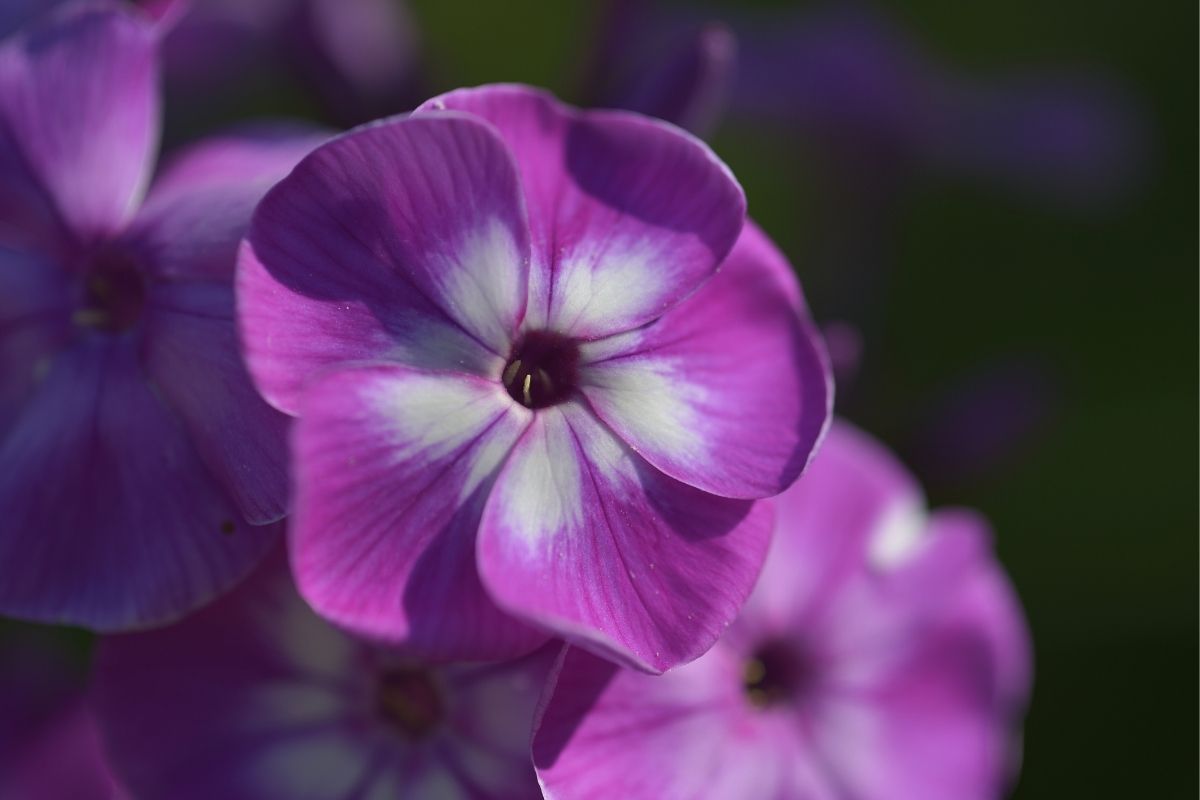
Laura phlox is a tall-growing phlox species that also happens to produce some of the brightest flowers in the genus.
These flowers create vibrant pink or fuschia flowers with a slightly lighter center, but they are not to be mistaken for the red magic phlox, which consists of more purple-toned flowers.
As a result of their vibrancy, Laura phloxes are known to attract hummingbirds, birds, and butterflies for pollination. This is also due to the sweet, honey-like fragrance.
10. Nora Leigh Phlox (Phlox Paniculata ‘Nora Leigh’)
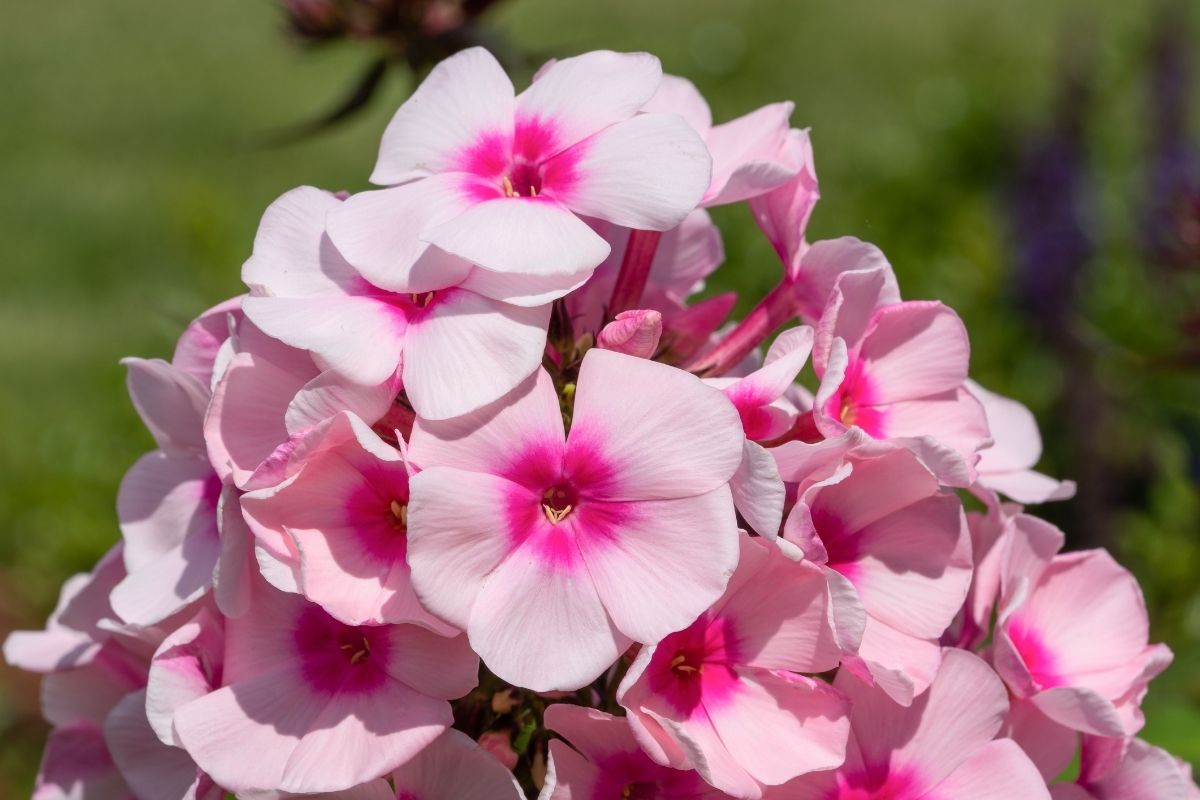
Another tall-growing phlox species (with average heights of around 2-3 feet) is the Nora Leigh phlox.
Nora Leigh phloxes are slightly different to other phlox species thanks to their variegated leaf pattern, along with blooms of a pinkish-purple darker center and white outer petals.
The Nora Leigh phlox is best planted next to a path to enjoy its sweet fragrance, which helps to lure wildlife to your garden for pollination.
11. Volcano Ruby Phlox (Phlox Paniculata ‘Barthirtyone’)
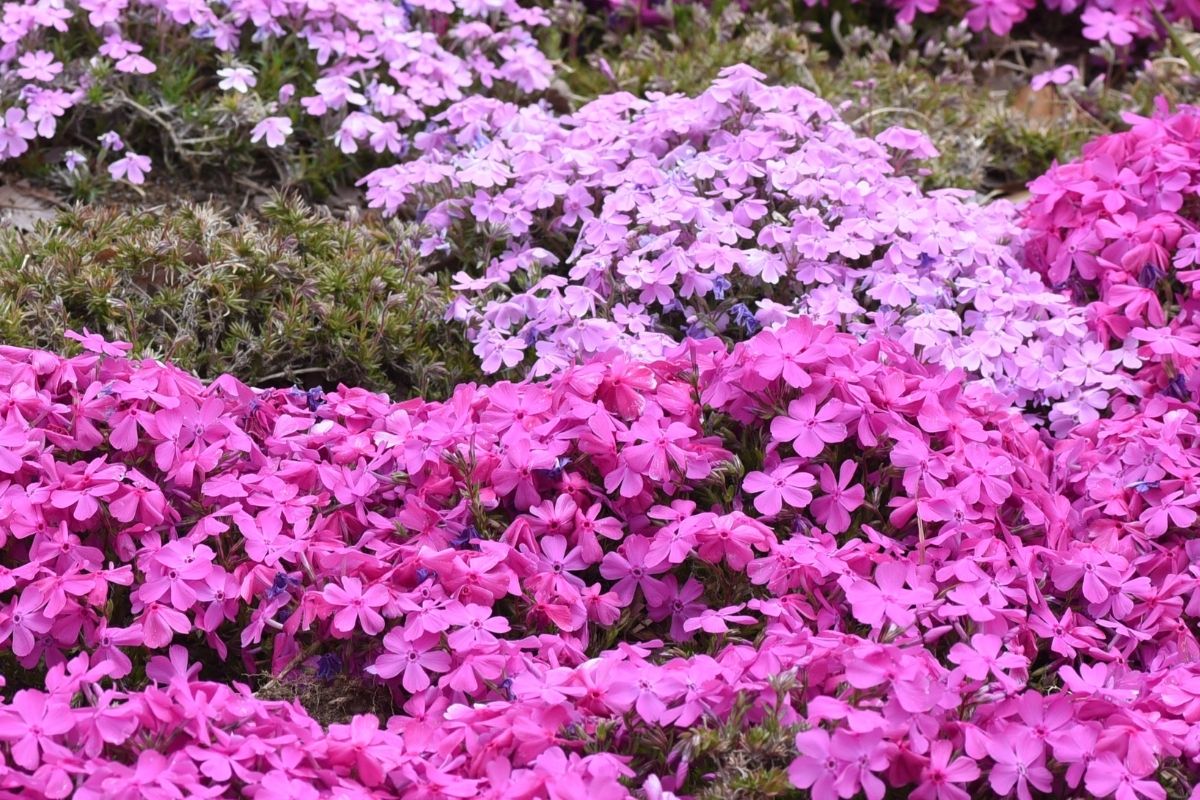
As the name suggests, the volcano ruby phlox offers an explosion of vibrancy to a flower bed.
These flowers are highly sought after for their rich dark pink or fuschia coloring, though they can also come in varying shades of ruby, purple, or even pure white.
Volcano ruby phloxes are sturdy flowers known for their resistance to mildew and ability to bloom countless flowers during the summer months. They are also powerfully fragrant flowers that attract an abundance of wildlife.
12. Flame Pink Phlox (Phlox Paniculata ‘Flame pink’)

Also known as the pink flame phlox, the flame pink phlox is arguably poorly named.
While the connotations of “flame” can be likened to “volcano” of the volcano ruby phlox, the flame pink phlox presents fairly gentle pink flowers.
The strength of the color varies between each flower, with some appearing more purple or vivid pink than others.
Flame pink phloxes are quite short, making them ideal for smaller gardens, and their pleasant fragrance helps to lure pollinators such as hummingbirds and butterflies.
13. Coral Flame Phlox (Phlox Paniculata ‘Coral Flame’)
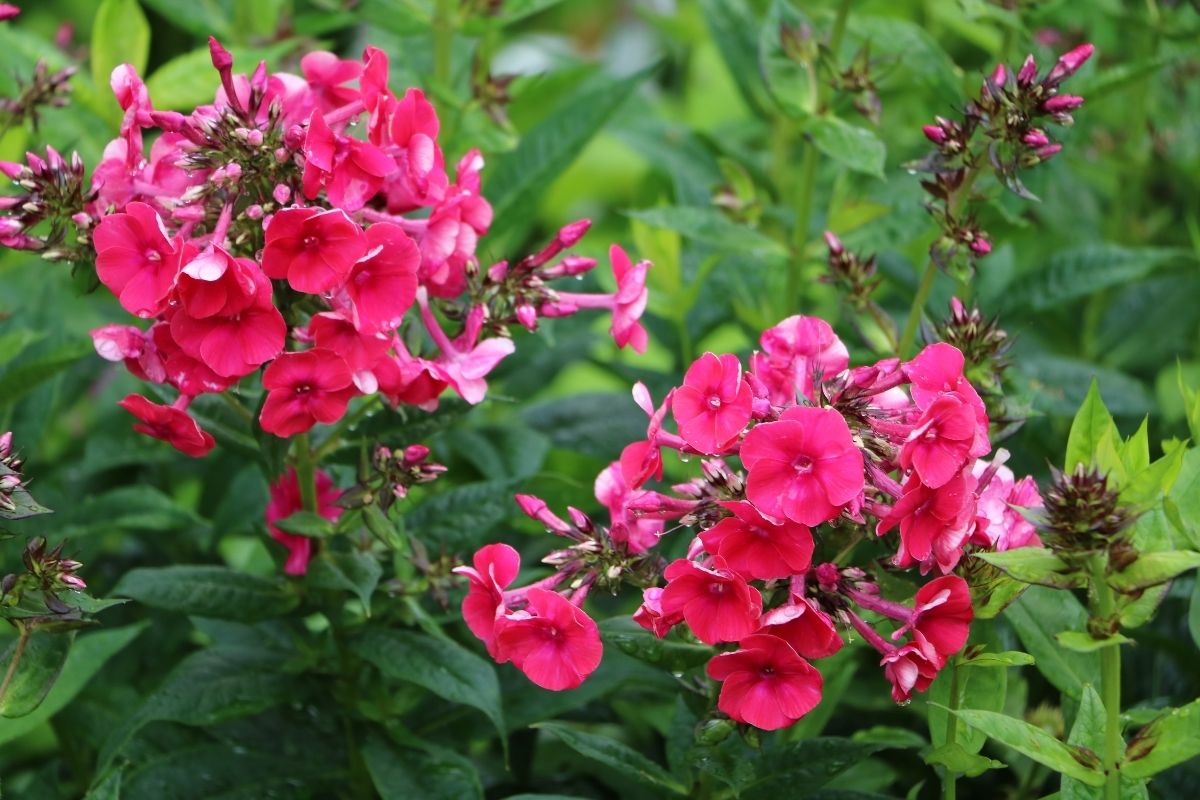
As the name suggests, the coral flame phlox stands out on this list for producing fantastic coral blooms.
The vibrancy of the coral varies between each flower, with some producing more dusty coral blooms than others, making for a beautiful sunset-themed flower bed.
The coral flame phlox is a fairly compact and dwarf phlox species, which is ideal for smaller gardens or courtyard gardens. They are resistant to mildew and generally prefer full sunlight.
14. Blue Paradise Phlox (Phlox Paniculata ‘Blue Paradise’)
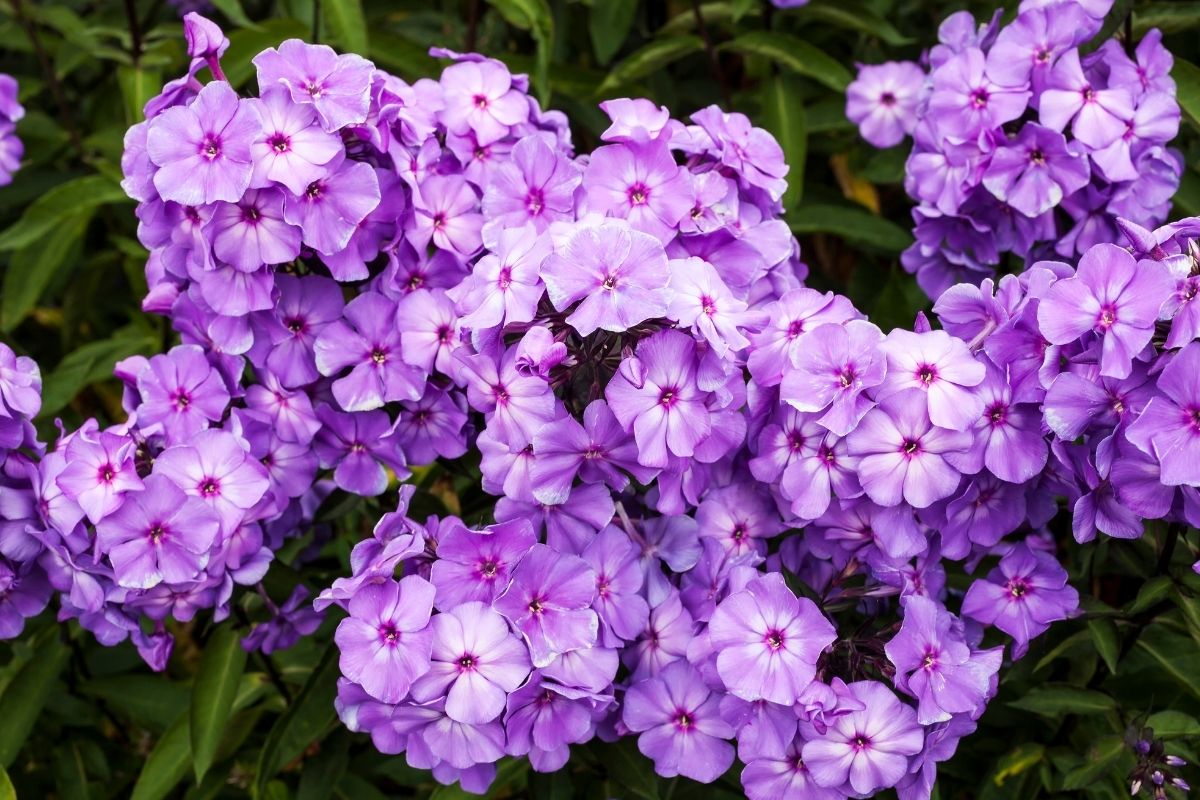
Blue paradise phloxes are most commonly grown in and associated with quaint cottage gardens. These flowers produce delicate pale blue flowers with hints of lavender and lilac, making for a unique and elegant addition to a garden.
The blue paradise phlox provides a pleasant and powerful scent that helps to lure pollinating wildlife. The domed clusters might need the support of a stake as the plant grows taller.
15. Peppermint Twist Phlox (Phlox Paniculata ‘Peppermint Twist’)
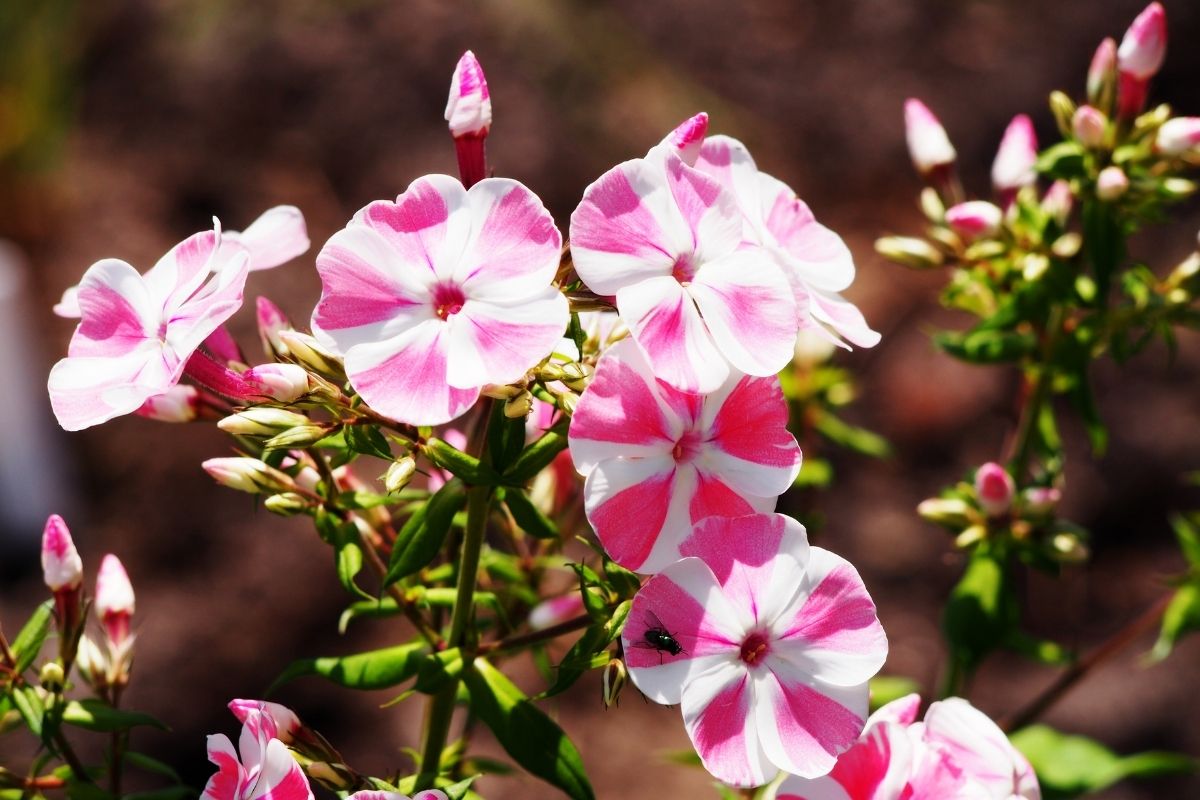
Much like the candy stripe phlox, the peppermint twist phlox features blooms of pink and white striped flowers. However, peppermint twist phloxes tend to possess darker or richer pink petals, which make the flower resemble the red and white of peppermint candy.
These flowers have good resistance to powdery mildew and are most commonly planted at the front of a border to provide a fabulous explosion of colors.
16. Emerald Cushion Blue Phlox (Phlox Subulata ‘Emerald Cushion Blue’)
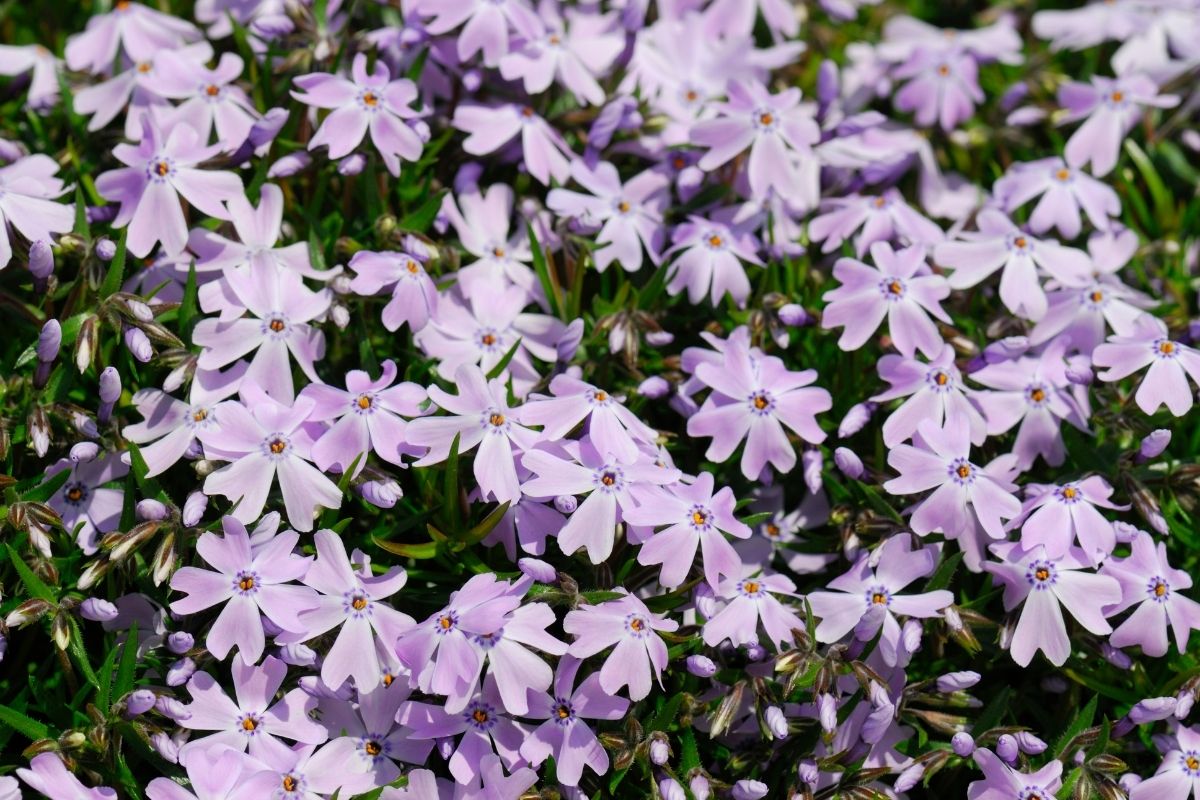
The clue is in the name of this phlox species. The emerald cushion blue phlox consists of fabulous glossy emerald foliage alongside lavender-blue flowers, creating a satisfying stark contrast that makes the flowers (and other nearby species) stand out.
As the flowers and foliage grow quite quickly and in abundance, it looks something like a “cushion” in a garden bed.
Their draping structure makes the flowers ideal for growth in a rock garden, hanging over a rocky edge, or at the edge of a border.
17. Opening Act Blush Phlox (Phlox Paniculata ‘Opening Act Blush’)
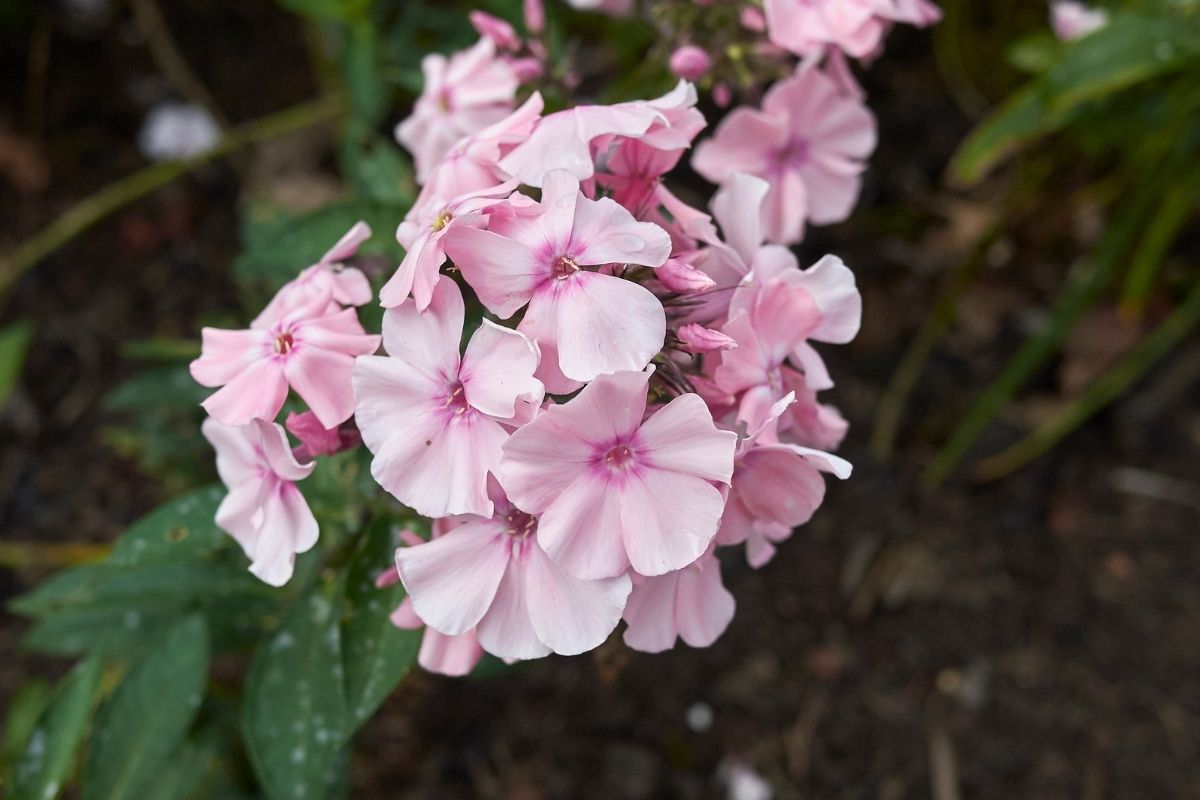
The opening act blush phlox is an ideal flower for those wanting a subtle and lightly-colored phlox species.
Its name is in reference to the light pink delicate flowers that provide a beautiful entry to a garden before the “final acts” of vibrant flowers. It’s simple, mildew-resistant, and has a habit of spreading.
The glossy dark green foliage helps to enhance the pink and lavender tones in the flowers, making it a good choice for landscaping, growth in borders, or in large pots or containers.
Conclusion
So, there you have it! As you can see, there are countless phlox species that are ideal for growing in any garden.
It makes sense why the phlox genus is so popular amongst gardeners and horticulturists – the range of vibrant to delicate colors provides an exciting variety, not to mention their low-maintenance care requirements and resistance to mildew.
As with any flower or plant, it’s important to know the care requirements of each phlox species to ensure that the flowers thrive in your garden, rock garden, or courtyard. With good care and pruning, the flowers can bloom for several weeks or months!
Editor’s Recommendations
Is Sand Good For Lawns? (and What Type of Sand for Lawns Is Best)
Spiky Weeds That Can Ruin Garden Beds (And How To Get Rid Of Them?)







